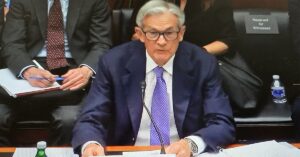Scared by what could happen during the COVID-19 pandemic, the Federal Reserve injected trillions of dollars into the U.S. economy. This greatly expanded money supply is causing its own problems — namely out-of-control inflation that, in turn, has led to rising interest rates. Can the Fed tame this monster without plummeting the economy into a recession?
Nothing affects demand for mortgages more than inflation, which has been soaring since the summer of last year. Inflation reached a 40-year high in May 2022 with prices 8.6% higher than one year earlier. And mortgages had interest rates not seen since 2008.
The Fed is now faced with the difficult task of increasing the overnight rate and lowering the money supply without triggering a recession.
This past June,
refinance application volume was down 75% year over year in response to rising rates. This was occurring at the same time that purchase volume was being impaired by a lack of for-sale housing supply. Government regulations at the federal, state and local levels affect few industries as much as the mortgage business. Media understand to some extent that the mortgage industry is affected by Federal Reserve monetary policy but sometimes miss how this happens.
The Federal Open Market Committee’s June 2022 statement explained why the target range for the federal funds rate was being raised an extraordinary 75 basis points, reaching 1.5% to 1.75%. (The federal funds rate is what banks charge to borrow from each other, usually on an overnight basis.)
This statement failed to address the fact that a main cause of inflation is Fed monetary policy. As part of its chartered goals, the Fed aims to keep both unemployment and inflation low. It succeeded with one goal but massively missed on the other.
Awkward position
When the pandemic first hit more than two years ago, the Fed sought to stabilize the economy by lowering the overnight rate and increasing money supply. The rate decrease received lots of media coverage. But the increase in money supply through quantitative easing (QE) garnered less attention, which is unfortunate since it is arguably the main reason for rising inflation.
The Fed may be increasing rates simply because there was no room to lower them in the event of a recession. The alternative is that the Fed is increasing rates in order to make things more expensive which will somehow make things less expensive as people slow spending. While this is the explanation that the Fed sold to the media, it seems a bit far-fetched. With the unemployment rate low and the number of job openings nearly 5 million more than the number of people unemployed, the Fed did not have the usual concern about higher rates leading to an unacceptable unemployment rate.
Earlier this year, Fed Chair Jerome H. Powell and Treasury Secretary Janet Yellen blamed imbalances between supply and demand for the high rate of inflation. The narrative that supply disruptions are the source of inflation — and that the effects are transitory — is incomplete. The main force driving inflation is a money supply that’s too large. If supply disruptions dissipate, money supply — the monster under the bed — will still be there.
The importance of money supply was noted in 1979. Prior to then, the Fed’s approach to inflation was strictly about interest rates. On Oct. 6, 1979, Fed Chair Paul Volcker changed this, deciding instead that an overly large money supply was responsible for high inflation. The inflation rate, a mere 1% in 1965, hit 14% by 1980.
Competing theories
If the amount of money in an economy doubles, all else being equal, price levels also will double. Consumers will pay twice as much for the same amount of goods and services. This is known as the quantity theory of money.
The quantity theory of money was popularized in 1963 by economists Milton Friedman and Anna Schwartz after the publication of their book, “A Monetary History of the United States, 1867-1960.” To do it its job, the Fed must not pay attention solely to interest rates but money supply as well. Reducing the money supply involves the Fed selling assets — Treasurys and mortgage-backed securities — which is designed to lower prices for securities on the open market. This also could result in higher long-term rates.
The quantity theory of money is opposed by modern monetary theory, which posits that a government does not have to worry about deficits as long as it can increase money supply with no significant harm to the nation’s currency value as determined by foreign exchange markets. Rather than generate revenue from such things as taxes, a nation can create money as long as its currency isn’t devalued.
Most economists do not take modern monetary theory seriously. Modern monetary theory has largely been popularized by politicians as an excuse for irresponsible fiscal policy. They claim that deficits can be accommodated by creating money rather than borrowing it.
Printing money
The Fed controls money supply by buying or selling Treasury debt or mortgage-backed securities on the open market. If the Fed wants to increase money supply, it purchases Treasury debt from a primary dealer. The Fed now owns the securities and credits the account of the dealer with money that did not previously exist. Decreasing money supply is done by selling such securities and essentially removing the money received from the Fed balance sheet.
Money supply increased from $15.5 trillion in February 2020 to $21.6 trillion in February 2022, according to the Fed. And a Wall Street Journal opinion piece published shortly thereafter summarized the relationship between money supply and inflation.
“The true source of the current inflation is the cumulative increase in the money supply measured by M2 since February 2020 — an incredible 41.2%,” the article stated. “Two sets of entities create money in the U.S. economy: the commercial banks and the Federal Reserve System. In normal times, the banks create most of the money by making loans.” A more accurate description may be that the Fed creates money and banks activate it.
This last point is important. It is bank lending that stimulates the economy, but if investors are not going to be able to price through risk premium, then they do not have the incentive to invest in the physical aspects of the economy.
Without physical investment, growth is limited. Risk premium is the higher return an investor gets for being subject to added risk. (In the mortgage business, these are the add-ons seen for high loan-to-value ratios or low credit scores.) Once the pandemic started, it became difficult if not impossible to accurately measure risk.
Recession fears
An important point is that normalization of money supply from such an expanded level has never been done. How does the think tank propose to solve this dilemma? The institute suggests that the Fed needs to raises rates enough to slow monetary growth gradually and steadily. But the Fed faces danger on two fronts.
The Fed could fail to raise rates enough. This wouldn’t curb monetary growth because banks would still be creating money by lending. And this could mean that out-of-control inflation would not only continue through this year but also remain high into 2023 and 2024.
Conversely, the Fed could raise rates too much, the institute stated. If demand for loans dries up, this could cause the economy to seize up. The U.S. would then experience a recession not unlike what occurred under the Volcker regime in the early 1980s.
Failed promise
The Fed did a sizable quantitative easing in response to the Great Recession, growing its balance sheet from $900 billion in 2008 to $4.5 trillion in 2015. It promised that QE would be undone and money supply lowered, but that never happened. In December 2018, the S&P 500 lost 9% in value and the Fed gave up on reducing money supply.
In October 2019, the Fed announced that it would be increasing money supply. Fed Chair Powell, in response to a reporter’s question said, “This is not QE. In no sense is this QE.” In short, the monetary policy response to 2008 was never undone. This leads to an obvious question: Is it possible to undo QE?
Strangely enough, this does not mean a long-term nightmare of high rates. A proper measure of concern should be the ratio of total debt — government, corporate and individual — to gross domestic product, or the sum of all goods and services produced by the economy.
This is to the economy what in those in the mortgage business call the debt-to-income ratio. As economist Lacy Hunt has been pointing out, high debt (and high government debt in particular) will lead to low growth and, consequently, low interest rates. This also would mean rising prices and stagnant economic output otherwise known as stagflation. ●
-
Dick Lepre is a loan agent for CrossCountry Mortgage LLC. He has been in the mortgage business since 1992 and has been writing a weekly email newsletter on macroeconomics, mortgages and housing since 1995. Lepre (NMLS No. 302379) is from New York City, but he has lived in the San Francisco Bay Area since 1968. He has a degree in physics from Notre Dame. Follow him on Twitter @dicklepre.
View all posts







